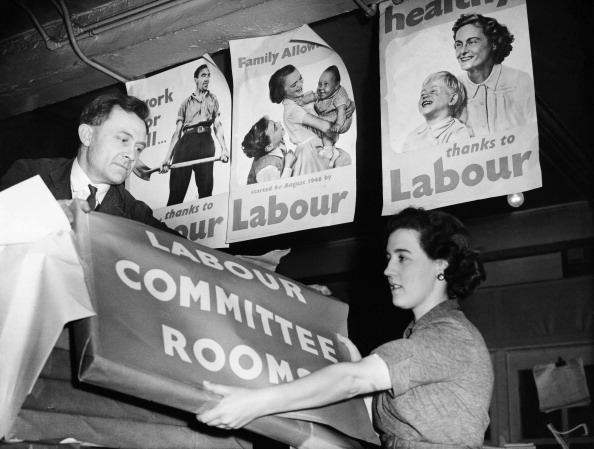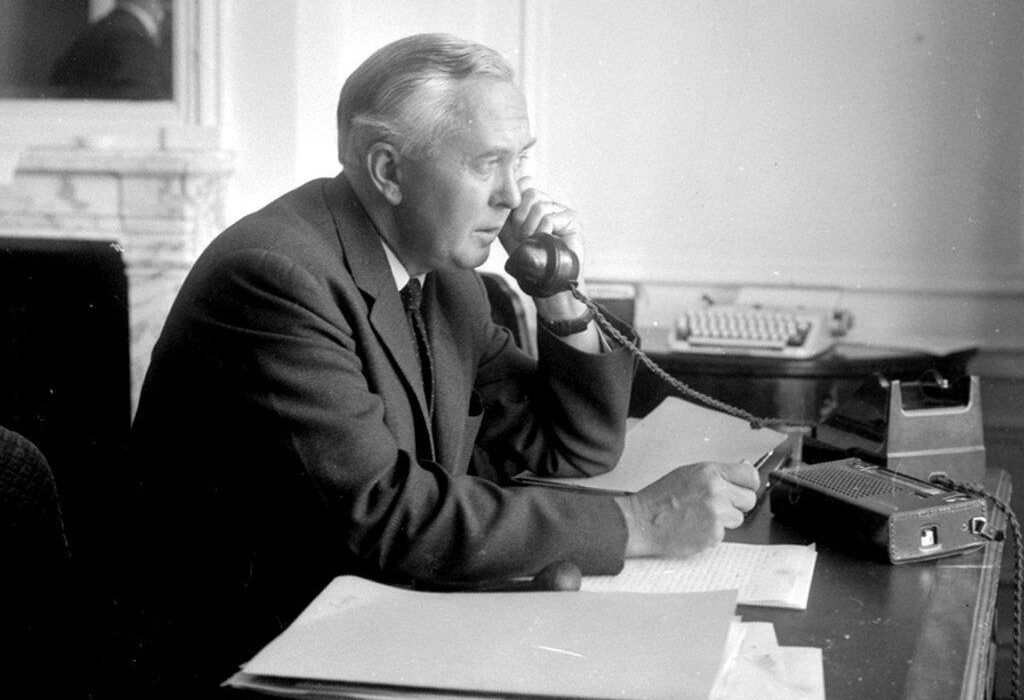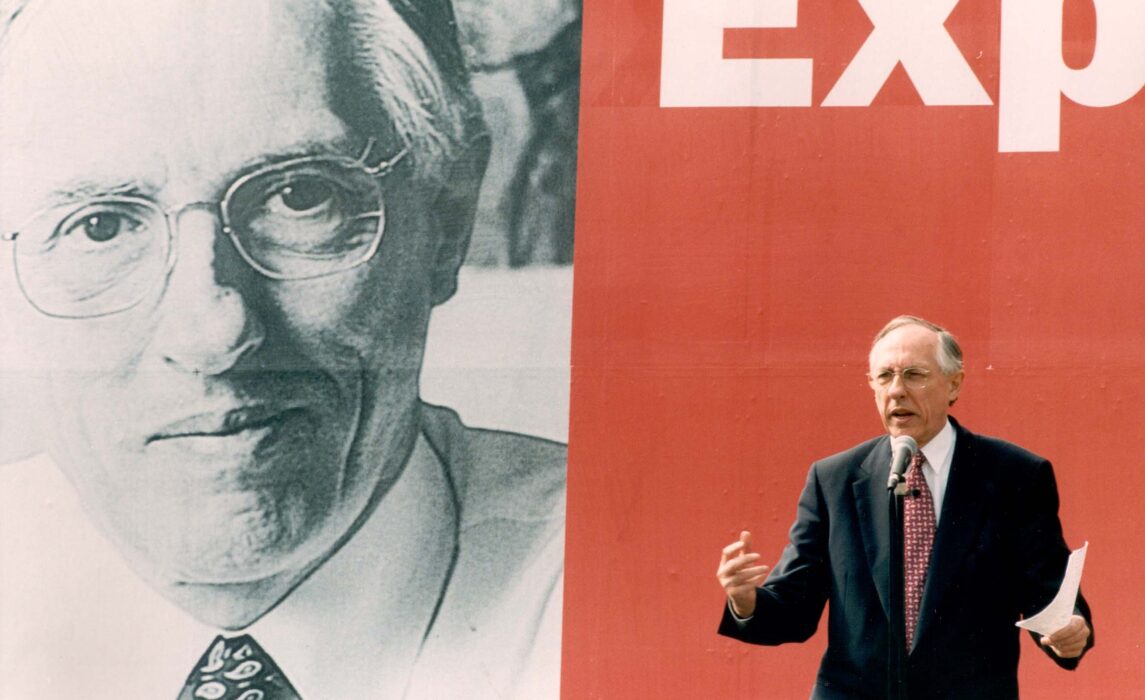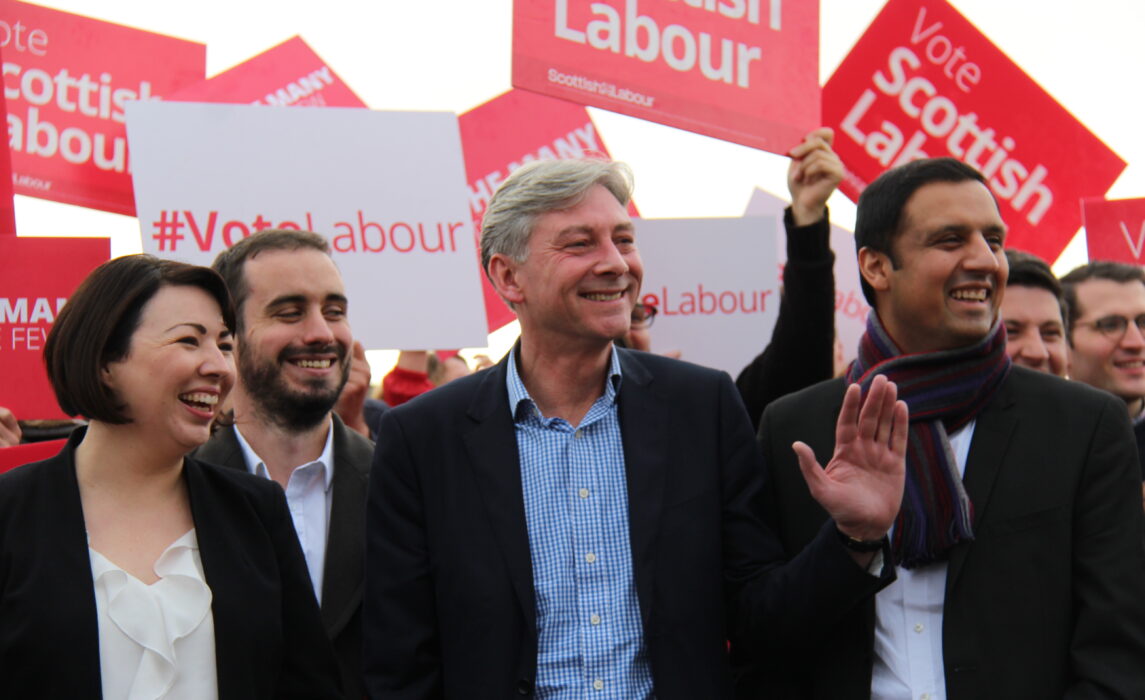Labour's History
The Labour Party has always been about people. It was formed to give ordinary people a voice and has sought power in order to improve their lives. The fruits of this work have changed Britain for the better, through the most progressive governments in our country’s history.
Ours is a proud history, with achievements – from the NHS to the welfare state – that have made a lasting difference to the lives of people across our country. Over the past century, we have been the Party of the many, not the few.
A new Party for a new century
The story of Scottish Labour begins in April 1888 when Keir Hardie stood in the Mid-Lanark by-election. Hardie, who stood on a platform that included a pledge for stronger regulation of health and safety in the mining industry, the introduction of an eight-hour maximum working day, votes and political rights for women and home rule for Scotland, won only 617 votes. However, by standing against the Conservatives and Liberals, Hardie had given birth to a new and radical force in Scottish politics.
Four months after the Mid-Lanark campaign, the Scottish Labour Party was formed, and, one year later, the new party merged with the Independent Labour Party (ILP), which Hardie had a played a key role in creating.
The Scottish Trade Union Congress brought together its affiliated unions, the ILP’s Scottish division and associated socialist societies in 1899 to organise for the promotion of representation for working people through the Scottish Workers’ Parliamentary Committee, later reviving the title of Scottish Labour Party. In 1909, the Scottish Labour Party amalgamated with its sister party to create the UK-wide political organisation.
Its formation was the result of many years of struggle by working class people, trade unionists and socialists, united by the goal of working class voices represented in British Parliament. Ignored by the Tories and disillusioned with the Liberals, the early pioneers of the Labour movement gathered together to push for change.
This is our legacy – and you’re our future.
Labour’s history is full of achievements, and we know we’ve got plenty more to come. So be a part of making it happen. Sign up to find out how.
Early years and into government
Slowly but surely, the Party grew. The first election campaign in 1906 saw 26 MPs elected to Parliament – together they chose Labour as their official name.
That early growth continued, with more MPs elected in the years to follow, leaving Labour well placed to challenge for power by the time of the 1924 election. It was this election which saw the first Labour government in our country’s history, led by a Scot, Ramsay MacDonald, the Party’s first Prime Minister.
The first Labour government only held office for a short time, but its achievements were notable. Despite having no majority it passed legislation to improve housing, education and social insurance while also addressing unemployment. John Wheatley, MP for Glasgow Shettleston, steered through the 1924 Housing Act, legislating for the first major programme of municipal house building. A Scottish Home Rule Bill was introduced by George Buchanan, Labour MP for the Gorbals, though the measure was eventually talked out despite government support for the general principle of the Bill.
The 1924 government lasted only a few months, five years later came the election of the second. Dominated by the world economic crisis, the following two years were focused on action to tackle the unemployment of the Great Depression. It was not an easy Parliament and the 1931 election saw only 52 Labour MPs elected.

War, the 1945 Government and onto the future
One of those who remained after the 1931 election was Clement Attlee. He became Deputy Leader in 1931, working with a new generation like Ernest Bevin and Hugh Dalton to turn the Party’s fortunes around, before being elected Leader in 1935.
By the end of World War II, the British public were crying out for change. Labour would lead that change.
Our manifesto ‘Let us Face the Future’ laid out a bold vision, pledging to destroy the five ‘evil giants’: want, squalor, disease, ignorance and unemployment. It was a message which captured the imagination of the country and took Clement Attlee into Number 10 on the back of a landslide, winning 393 seats.
Attlee’s Labour government wasted little time enacting visionary change, introducing social security, bringing key industries back into public ownership and introducing a major programme of house building, providing safe and secure homes.
But it was the Attlee government’s introduction of the National Health Service which will rightly go down as Labour’s greatest achievement. Spearheaded by Health Secretary, Nye Bevan, the creation of the NHS has transformed our country, removing the anxiety of illness from millions of families. To this day the NHS is a national treasure and Labour will always protect it.
One of the great unsung heroes of the war was the Labour MP for Stirling and Clackmannan West, Tom Johnston, who was Secretary of State for Scotland between 1941 and 1945. He laid the foundations of Scotland’s post-war reconstruction by establishing the North of Scotland Hydro Electric Board, the Scottish Council of State and a Council of Industry, as well as laying part of the foundation for Aneurin Bevan’s NHS by accelerating the scale and speed of public investment in hospital construction and staffing.

The Wilson years and onwards
Despite winning nearly 50 per cent of the vote, Labour lost office in 1951. Attlee was succeeded by Hugh Gaitskell and would not return to power until 1964 under the leadership of Harold Wilson. The Labour governments (1964-70 and 1974-79) under Wilson and then James Callaghan were marked by a period of great change: the permanent ending of the death penalty, decriminalisation of homosexuality, legislation to outlaw racial discrimination, and the establishment of the Open University.
It was Barbara Castle, our Secretary of State for Employment, who also brought about significant social change, as she introduced the groundbreaking Equal Pay Act of 1970. Once again Labour men and women led the way in modernising and reforming Britain to improve the lives of millions.
Labour again led the way on devolution, when the government established the Kilbrandon Commission, which recommended the creation of devolved assemblies for Scotland and Wales. Following this, Labour officially committed itself to an elected assembly, and subsequently fought and won the October 1974 general election on this programme.
In 1976, the Callaghan Government introduced the first Devolution Bill to the House of Commons, a piece of legislation piloted through Parliament by the young minister (and future Labour leader) John Smith. However, the creation of a Scottish Assembly was unable to command the requisite number of votes in the subsequent referendum in March 1979. Within weeks of the referendum disappointment Labour lost the general election.
The election of 1979 began the wilderness years of opposition. Initially, under Michael Foot, the party began a period of contemplation and ultimately renewal. His successor, Neil Kinnock took on the work of reconstruction, with modernising reforms which would be continued by John Smith who introduced One Member One Vote (OMOV) to further democratise the people’s Party.
During the 1980s, when the Labour Party did poorly at national level, Scottish Labour remained the largest party in Scotland. This provided a large part of the base from which Neil Kinnock was able to establish a comfortable lead over the SDP/Liberal Alliance at the 1987 General Election, and took the party within a hair’s breadth of winning in 1992.
Throughout the1990s, Scottish Labour played a leading role in the Constitutional Convention, and worked with others in local government, the churches and wider Scottish civic society to produce new proposals for a new Scottish Parliament.

Donald Dewar: The Scotland Bill
Following the death of John Smith in 1994, Tony Blair was elected Leader, ushering in the era of New Labour. The reforms introduced in this era – a revitalised policy programme built on Labour values hand-in-hand with a modernised party machinery – would lead to the landslide General Election win of 1997, with the Scottish Labour Party winning a record 56 seats in Tony Blair’s 1997 landslide election victory.
After 18 years under the Tory rule, Labour offered the hope of a better Britain. The governments that followed – under Tony Blair then Gordon Brown – brought many of the changes our country desperately needed.
In power Labour put into practice our values of equality and social justice, introducing Civil Partnerships, the Equality Act, the Human Rights Act and legislating for equality of opportunity for all. We cancelled up to 100 per cent of debt for the world’s poorest countries and brought about the world’s first Climate Change Act.
Within three months of the 1997 election, Donald Dewar produced a White Paper on devolution. When Dewar introduced the Scotland Bill, he read the first clause, “There shall be a Scottish Parliament”, paused, looked up at his audience and said, “I like that.” He expertly piloted the legislation through the House of Commons, and, in September 1997, a mandate for a Scottish Parliament in a referendum was won: 74.3 per cent of those voting supported a Scottish Parliament, and 63.5 per cent were in favour of giving it tax-raising powers. In the first election to the Scottish Parliament, in May 1999, Scottish Labour won 56 of the 129 seats, and Dewar became Scotland’s first First Minister.
During the Scottish Parliament’s first session, when financial resources were scarce, radicalism took many forms. In total, 62 Bills were passed and became Acts of the Scottish Parliament. Amongst the most important measures to advance greater social justice in Scotland were the abolition of feudal tenure, land reform, and repeal of clause 28.
After Donald’s tragic death, Henry McLeish was elected First Minister. He was succeeded in 2001 by Jack McConnell and Labour was once more returned as the largest party in the Parliament after the 2003 election. McConnell pioneered innovative changes, including ban on smoking in public places and controls on anti-social behaviour.

The 2010’s
Following the election of 2015, Jeremy Corbyn was elected the Leader of the Labour Party. His leadership focused on a message of “For The Many, Not The Few” which inspired people across the UK to join Labour.
In late 2017, Richard Leonard would become the Leader of the Scottish Labour Party and spent his time at the top campaigning for a vision similar to that of Jeremy Corbyn’s – he matched his experience in the labour movement with his desire to improve the lives of working class Scots.

Building the alternative
After the 2019 election, Keir Starmer went on to become the UK Labour Party Leader. Keir has sought to begin rebuilding the Labour Party, understanding why we have lost and what it is we must do to reconnect with people across the United Kingdom. In the greatest traditions of our party, Keir’s ambition is to transform people’s lives across these isles; allowing Britain to be the best place to grow up in and the best place to grow old in.
In March 2021, just weeks before the Scottish Parliament elections, Anas Sarwar was elected Leader of the Scottish Labour Party following Richard Leonard’s resignation earlier that year.
In the midst of a global pandemic and with the odds against us, Anas Sarwar set the party’s election campaign into motion with a message of bringing Scotland together to unite behind our country’s recovery from the impacts of the Coronavirus. Following a motivated and inspiring campaign, Anas is now working to build Scottish Labour as the credible, progressive alternative that can win again.